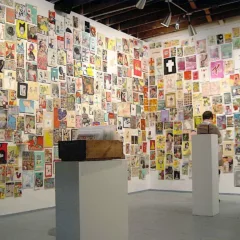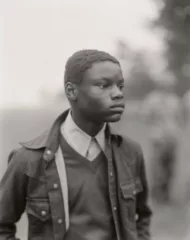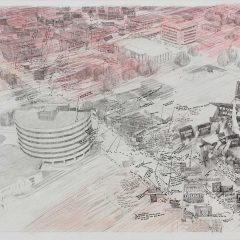(Matthew Rose sees a lot of great outsider art at the Outsider Art Fair in the Hotel Le A in Paris.–the Artblog editors)
James Castle spent his life in silence on a farm in Garden Valley, Idaho. Deaf and unable to communicate with his own family, even in sign (it wasn’t taught in his local school), Castle spent his time looking closely at the world, drawing barnyards, farm landscapes, rocking chairs and self portraits with soot and spit, usually on unfolded match boxes and found scraps of paper. He patched and stitched together naif cardboard sculptures of people, ducks or small gift-like packages made from bits of paper, product wrappings and twine, thread and fabric scraps. Castle (1899 – 1977) was one of the true “outsider” artists who made a startling impact on the 20th century with his drawings, often double-sided, and handmade books and constructions. His works startled me with their freshness and their uncommon touch when I saw them for the first time in a hotel here in Paris at The Outsider Art Fair.
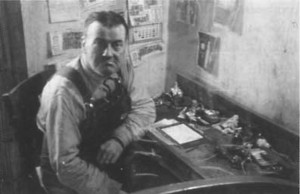
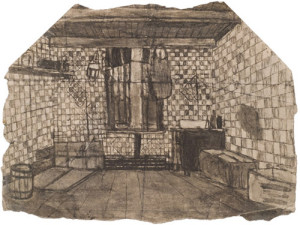
First Time for Outsider Art Fair in Paris is a Success
A long-time institution in New York, the OAF opened in Paris for the first time at the Hotel Le A off the Champs Elysées. Some 25 art dealers specializing in what is known in French as Art Brut exhibited works by American, European and some African artists on pretty much every available hotel room surface: beds, walls, bathrooms, night tables, drawers and even in showers. Recently bought by art dealer and businessman Andrew Edlin, the OAF, he says, was a serious success. “An article in Le Monde was extremely positive and drove a steady, interested art crowd here,” says Edlin. “The works are different and the dealers in this material are perhaps more intense. Our opening night was mobbed.”
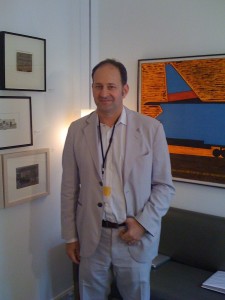
An intimate art fair unlike the big, busy, crowded FIAC
While the hotel art fair concept is not new, I’ve seen more and more of them popping up as satellites around major art fairs – it’s not easy to get it right. The big art orgy in Paris is the FIAC (Le Foire International d’Art Contemporain – October 24 – 27) held at the Grand Palais. Frankly, I was too tired to deal with the crowds and what promised to be yet another circus, but the notion of seeing artworks in a small, tightly-curated show was extremely appealing. Clearly I was not alone: Folks weary of the big tent, expensive splurges and busy crowds were out and about looking for quieter environs, a more intimate view of art and, a very different slice of the art world pie.
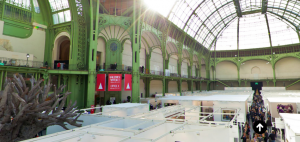
Among the visitors I bumped into in the halls was art dealer and artnet.com auction director Gracie Mansion. The New York art world icon was in town for all the art fairs but was happy to quietly wander through the six floors and 25 rooms to see the Outsiders. We talked a bit about her gallery in the East Village back in the 1980s and painter David Wojnarowicz whom she represented at the time. (DW passed away in 1992).
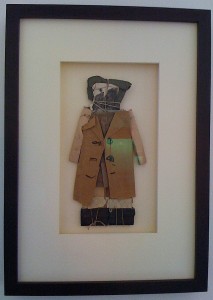
Gracie Mansion and Fleisher/Ollman Gallery
Gracie Mansion was just coming out of Fleisher/Ollman Gallery, the Philadelphia dealers who lined the walls with the work of cigar box collagist, Felipe Jesus Consalvos, as well as the semi-nudes duo-tone and sepia prints of Eugene Von Bruenchenhein (1910 – 1983). It was there, on the 6th floor, I first saw James Castle’s drawings and constructions. Next door at Karen Lennox’s small suite were quite a few more, including small fragile collaged books of broken letters and seemingly encrypted images. Lennox, an art dealer from Chicago was speaking with Bomi Odufunade, a London-based consultant with Dash & Rallo Art Advisory.
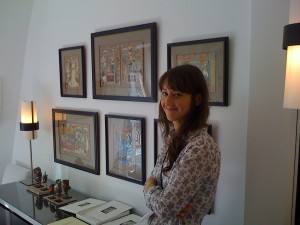
The Museum of Everything
I asked the dealers about James Brett the British collector behind the massive The Museum of Everything, a giant traveling collection of Outsider Art. Odufunade said James was a close friend and in fact, she had just gotten a text message from him. Brett apparently knows everyone. Brett recently exhibited some 600 outsider works from The Museum of Everything in Paris at The Chalet Society in 2012-2013 – a show that was steadily mobbed for months. The Museum of Everything then rolled through Russia, looking for untrained artists and curating local shows; the MoE then parked in Venice for a side by side with the 55th edition of the Venice Bienale.
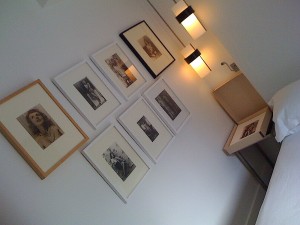
Lennox, who runs a gallery in Chicago and has shown outsider art for 30 years also shows James Castle’s works – small collaged books, drawings, assemblages, as well as works by Bill Traylor, an artist born into Slavery in 1854 in Benton, Alabama. Traylor, who I first discovered at Luise Ross’s gallery in New York in the 1980s, began drawing on bits of cardboard at age 85, working on the sidewalk and hanging his art on fences, sometimes offering them for a nickel or a dime. Charles Shannon met him and brought his work north to no avail. It wasn’t until the 1970s that the artist, who died in 1949, became a star.
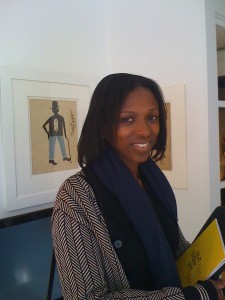
“The collectors, artists, consultants and critics here were really intellectual,” she says. “Interested in the art not the hoopla that now attends American art fairs.” Lennox, along with a few other dealers note that the fair brought in several museum curators and directors. As for the hotel as exhibition space, most seemed to like it – the intimacy and quiet and seeing the Eiffel Tower from their windows. Dealers could – and several said they did – sleep in the rooms. But mostly works were put on the beds for visitors to examine like the stacks of note book drawings by New Zealand Susan Te Kahurangi King. I was told nothing was for sale, but the publisher who presented them, Chris Byrne + Marquand Books of Seattle, will be coming out with a printed book within the year.

“Andrew Edlin’s selection of galleries was precise,” says Odufunade. “I particularly loved the works by Bill Traylor at Karen Lennox. Also the paintings by Hervé Bohnert on show at J.P. Ritsch-Fisch Galerie from Strasbourg, and the solo exhibition of Melvin Way drawings at Gallery at HAI in New York.” [Melvin Way’s work consists of non-scientific drawings of molecules].
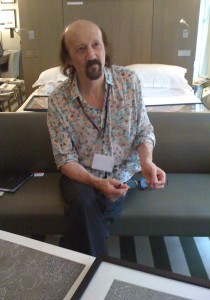
Unique displays in each room
Each room offered something unique and the dealers were more like scholars and collectors than merchants. I enjoyed meeting the erudite and warm Henry Boxer, a British dealer who exhibited many works by British Outsider and “mediumistic” artist Madge Gill, (1882 – 1961). Gill produced hundreds and hundreds of pen and ink drawings on paper and board and refused to part with any because she said they were “not hers to sell.” New York dealer, Gary Snyder Fine Art, filled a room with works by Janet Sobel (1894–1968), the Ukrainian-born artist whose naif works attracted the likes of LIFE Magazine in the late 1940s. Her “drip paintings” caught the eye of Peggy Guggenheim and were even exhibited in that celebrated gallery, Art of This Century in 1945. Some have even called Sobel, after seeing her abstract, all-over drip works, the Grandmother of Drip painting. Synder’s exhibition included a great many figurative works as well.
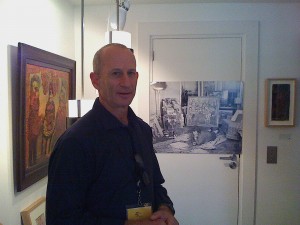
The OAF attracted galleries from Italy like Rizomi Art Brut, Germany – Wasserwerk.Galerie Lange and even Tokyo – the gallery Yukiko Koide Presents which showed more photographs by Eugene Von Bruenchenheim and a number of more contemporary Japanese and Czech artists like Anna Zemankova. A magnifying glass was supplied to examine some of the works up close.
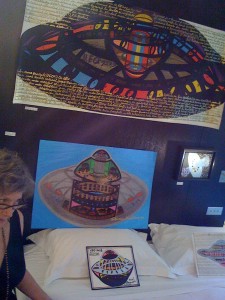
Henry Darger
A pair of jewels in the exhibition were the few framed works by Henry Darger (1892–1973) offered by Andrew Edlin. Darger, an obsessive iconoclast is a true star of Outsider art. During his lifetime, the janitor who lived and worked in Chicago, produced an immense body of beautiful drawings, watercolors and collages, all under the aegis of a single work that included a 15,000-page typewritten manuscript – In the Realms of the Unreal. The meticulously illustrated fantasy about seven little girls – The Vivian Girls – recounts their mission to “rescue abducted children who have been enslaved by the adult Glandelinians,” according to the American Folk Art Museum page on the late artist’s work. Indeed this work spins out like a movie, and its heroines are valiant although its story can be quite dark.
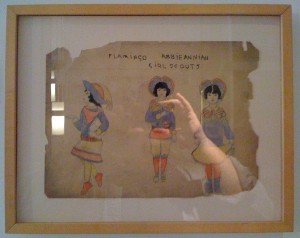
There was a lot to see and talk about in a very small space, this visitor had the impression of being somewhere – like in the middle of a film – as very specific, spectacular if not insular lives were made visible. But if you missed the OAF, there is still a formidable Outsider show running in Paris through the end of August 2014 – Raw Vision’s 25 Years of Art Brut – at the Halle Saint Pierre. (Raw Vision is a publication house dedicated to Outsider Art). There is a lot of work on view, and if the size of the Raw Vision catalog is any indication – it weights about a kilo and is roughly 400 pages– you’ll get your fill.


